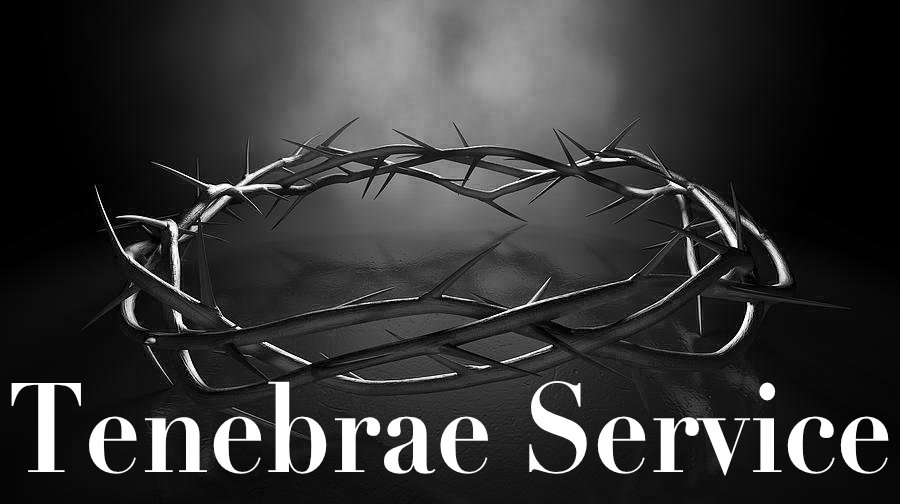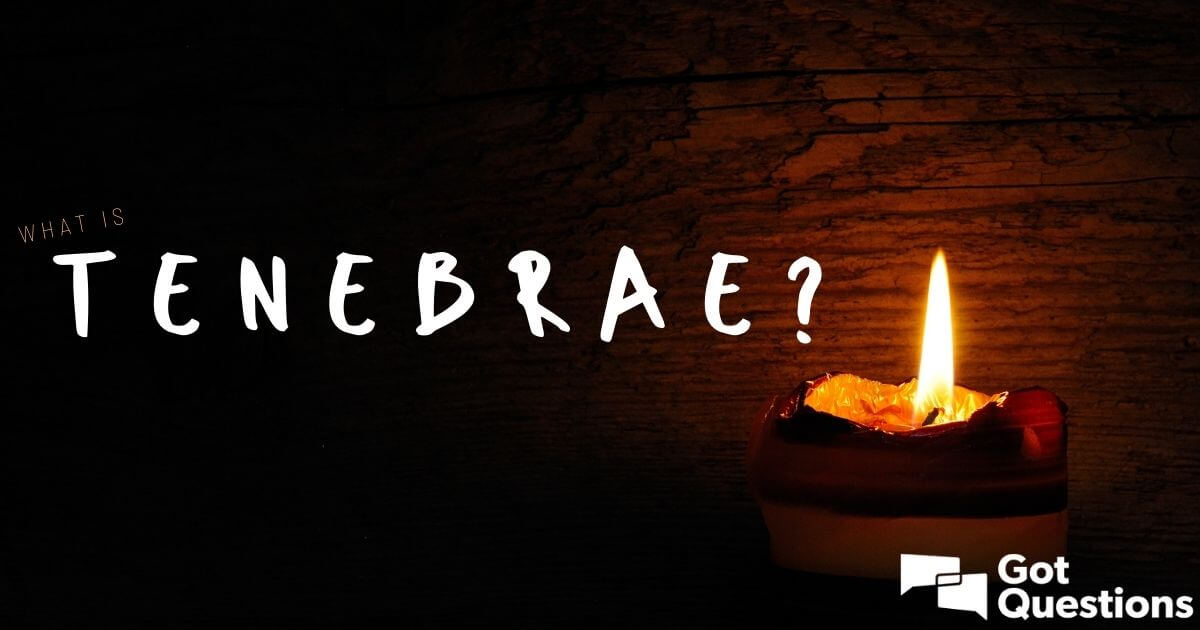There’s something truly mesmerizing about the Tenebrae service, a centuries-old tradition that speaks to the soul in ways few other rituals can. Imagine a dimly lit sanctuary, the soft glow of candles casting shadows across the walls, and the hauntingly beautiful sound of chanted psalms filling the air. This isn’t just a religious ceremony; it’s an experience that resonates with the deepest parts of human spirituality. Whether you’re exploring your faith or simply curious about its rich history, the Tenebrae service offers a glimpse into a world where light and darkness converge in profound harmony.
Tenebrae, which means "shadows" or "darkness" in Latin, is more than just a name—it’s a reflection of the emotional and spiritual journey this service embodies. As the candles are gradually extinguished, the congregation is enveloped in deeper and deeper shadows, symbolizing the sorrow and despair that precede the joy of Easter. It’s a powerful reminder of the human condition, of how even in our darkest moments, there is hope for renewal.
But why does this service hold such a special place in the hearts of so many? For one, it’s steeped in tradition, with roots that trace back to early Christianity. Yet, it’s also deeply personal, inviting participants to reflect on their own struggles and triumphs. Whether you’re a devout Christian or simply someone who appreciates the beauty of ritual, the Tenebrae service has something to offer everyone.
What Exactly is a Tenebrae Service?
Let’s dive right into the heart of the matter. A Tenebrae service is a solemn liturgical ceremony typically held during Holy Week, specifically on Holy Wednesday, Maundy Thursday, or Good Friday. It’s a time when the Church pauses to reflect on the Passion of Christ, the events leading up to His crucifixion, and the profound grief that followed. Think of it as a spiritual retreat in the midst of the Lenten season, a moment to step away from the busyness of life and connect with the divine.
Central to the Tenebrae service is the gradual extinguishing of candles, a visual representation of the fading light of the world as Christ suffers and dies. The service often includes readings from the Book of Lamentations, psalms, and other biblical passages that emphasize themes of sorrow, betrayal, and redemption. It’s not all heavy, though—there’s a sense of anticipation, a quiet hope that lingers beneath the surface, reminding us that even in the darkest hour, dawn is just around the corner.
Key Elements of the Tenebrae Service
- Candle Extinguishing: The most iconic feature of the Tenebrae service is the gradual extinguishing of candles, symbolizing the increasing darkness of the world as Christ endures His Passion.
- Scripture Readings: The service often includes powerful readings from the Bible, particularly from the Book of Lamentations and the Psalms, which evoke deep emotions and reflections.
- Chanting: Music plays a vital role in the Tenebrae service, with chants and hymns that create an atmosphere of reverence and contemplation.
- Final Crash: The service concludes with a loud noise, often created by slamming a book or dropping a wooden object, symbolizing the earthquake that occurred at the moment of Christ’s death.
The Historical Roots of Tenebrae
Now, let’s take a step back in time to explore the origins of the Tenebrae service. This ancient tradition dates back to the early days of Christianity, with some historians tracing its roots to the 4th century. Back then, it was part of a larger vigil service held during the night, where Christians would gather to pray and meditate on the Passion of Christ. Over the centuries, the Tenebrae service evolved, incorporating elements like candle extinguishing and chanting that we recognize today.
Interestingly, the service wasn’t always confined to Holy Week. In medieval times, it was also performed on other occasions, such as vigils for saints’ feast days. However, as liturgical practices became more standardized, the Tenebrae service became closely associated with the Triduum, the three-day period from Holy Thursday to Easter Sunday.
Why is Tenebrae Important Today?
Fast-forward to the present day, and the Tenebrae service continues to hold immense significance for Christians around the world. It’s not just a historical reenactment; it’s a living tradition that speaks to the modern soul. In a world that often feels chaotic and uncertain, the Tenebrae service offers a moment of stillness, a chance to confront the darkness within and without, and to find comfort in the promise of resurrection.
Moreover, the service has a universal appeal that transcends denominational boundaries. Whether you’re Catholic, Protestant, Orthodox, or another Christian tradition, the themes of sorrow, hope, and redemption resonate deeply with everyone. It’s a reminder that, despite our differences, we share a common human experience of suffering and triumph.
Preparing for a Tenebrae Service
So, you’re thinking of attending a Tenebrae service for the first time? Great choice! But before you go, there are a few things you should know to make the most of this spiritual experience. First and foremost, come with an open heart and mind. This isn’t just a spectator event; it’s an invitation to participate fully in the journey of light and darkness.
Here’s a quick checklist to help you prepare:
- Dress Comfortably: The service can last for an hour or more, so wear something that allows you to sit comfortably for an extended period.
- Bring a Candle: Some churches provide candles, but if you’re unsure, it’s always a good idea to bring your own. Just make sure it’s small enough to fit in your hand.
- Read Ahead: Familiarize yourself with the readings and hymns that will be used during the service. This will help you follow along and deepen your understanding of the ceremony.
- Be Present: Turn off your phone and resist the urge to check social media. This is a time to disconnect from the outside world and connect with the divine.
What to Expect During the Service
Once you’re seated, take a deep breath and let the atmosphere wash over you. The service typically begins with a procession, where participants carry candles into the sanctuary. As the readings and chants unfold, you’ll notice the candles being extinguished one by one, creating a tangible sense of darkness that mirrors the emotional weight of the story being told.
Don’t be surprised if you find yourself moved to tears. The Tenebrae service is designed to evoke strong emotions, and that’s part of its beauty. By confronting the darkness, we’re better able to appreciate the light that follows. And speaking of light, the final moments of the service often include a moment of silence, followed by the lighting of a single candle, symbolizing the hope of Easter.
The Role of Music in Tenebrae
Music plays a crucial role in the Tenebrae service, enhancing the emotional depth of the ceremony. From haunting chants to soul-stirring hymns, the melodies used during the service are carefully chosen to complement the readings and create a cohesive experience. One of the most famous compositions associated with Tenebrae is Thomas Tallis’s “Lamentations,” a choral masterpiece that captures the sorrow and beauty of the tradition.
But it’s not just about the music itself—it’s also about how it’s performed. In many churches, the choir sings a cappella, allowing the natural acoustics of the sanctuary to amplify the sound. This creates an otherworldly effect that draws participants deeper into the ritual. And when the final notes fade into silence, the impact is palpable.
Popular Tenebrae Hymns and Chants
- “Reproaches” (Improperia): A series of verses sung during the Tenebrae service, addressing Christ and lamenting His suffering.
- “Stabat Mater”:** A hymn that meditates on the sorrow of Mary, the mother of Jesus, as she stands at the foot of the cross.
- Gregorian Chant: Simple yet powerful melodies that evoke a sense of timelessness and transcendence.
Symbolism in Tenebrae
Every element of the Tenebrae service is rich with symbolism, from the candles to the readings to the final crash. Let’s break down some of the most significant symbols and what they represent:
- Candles: Represent the light of Christ, which is gradually extinguished to symbolize His suffering and death.
- Readings: Drawn from the Book of Lamentations and the Psalms, these passages reflect the grief and despair of the Passion.
- Final Crash: Symbolizes the earthquake that occurred at the moment of Christ’s death, as well as the shattering of darkness by the light of resurrection.
These symbols aren’t just decorative; they’re integral to the meaning of the service. They invite participants to engage with the story on a visceral level, to feel the weight of the darkness and the promise of the light.
Connecting Symbolism to Personal Faith
For many, the symbolism of the Tenebrae service goes beyond the ritual itself. It becomes a lens through which they view their own lives, seeing their struggles and triumphs mirrored in the journey of light and darkness. Whether you’re grappling with personal loss, seeking hope in difficult times, or simply searching for meaning, the Tenebrae service offers a space to explore these themes in a safe and supportive environment.
Modern Interpretations of Tenebrae
While the Tenebrae service has remained largely unchanged over the centuries, modern interpretations have emerged to make it more accessible to contemporary audiences. Some churches incorporate multimedia elements, such as video projections or live music performances, to enhance the experience. Others focus on interfaith dialogue, inviting participants from different religious backgrounds to join in the ceremony.
Regardless of the format, the core message of the Tenebrae service remains the same: a journey through darkness to light, a reminder of the power of hope and redemption. In a world that often feels divided, these modern adaptations offer a way to bridge gaps and bring people together in shared reflection.
How to Bring Tenebrae to Your Community
Interested in hosting your own Tenebrae service? It’s easier than you might think! Start by gathering a team of volunteers who are passionate about the tradition and willing to put in the effort to make it happen. You’ll need to secure a venue, choose readings and music, and plan the logistics of candle extinguishing and the final crash.
Don’t forget to promote the event through social media, flyers, and word of mouth. The more people you can reach, the greater the impact of the service will be. And remember, the goal isn’t just to recreate the ceremony—it’s to create a meaningful experience that resonates with participants long after the service is over.
Conclusion: Embracing the Darkness to Find the Light
As we’ve explored the history, symbolism, and significance of the Tenebrae service, one thing becomes clear: this is more than just a religious ritual. It’s a profound journey through the darkness of despair to the light of hope, a reminder that even in our darkest moments, there is always a path forward. Whether you’re attending a Tenebrae service for the first time or have been participating for years, the experience offers something new with each encounter.
So, what’s next? If you’ve been inspired by what you’ve read, why not take the next step and attend a Tenebrae service in your area? Or, if you’re feeling ambitious, consider organizing one yourself. And don’t forget to share this article with friends and family who might be interested in learning more about this beautiful tradition. Together, we can keep the light of Tenebrae alive for generations to come.
Table of Contents:
- What Exactly is a Tenebrae Service?
- The Historical Roots of Tenebrae
- Preparing for a Tenebrae Service
- The Role of Music in Tenebrae
- Symbolism in Tenebrae
- Modern Interpretations of Tenebrae
- Conclusion: Embracing the Darkness to Find the Light


